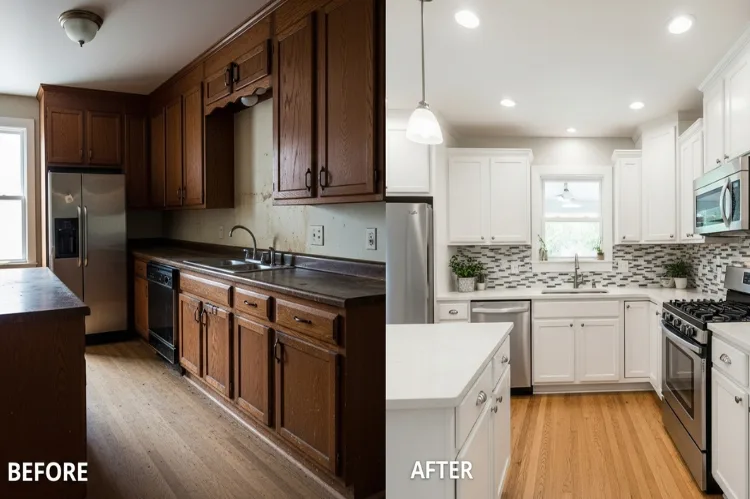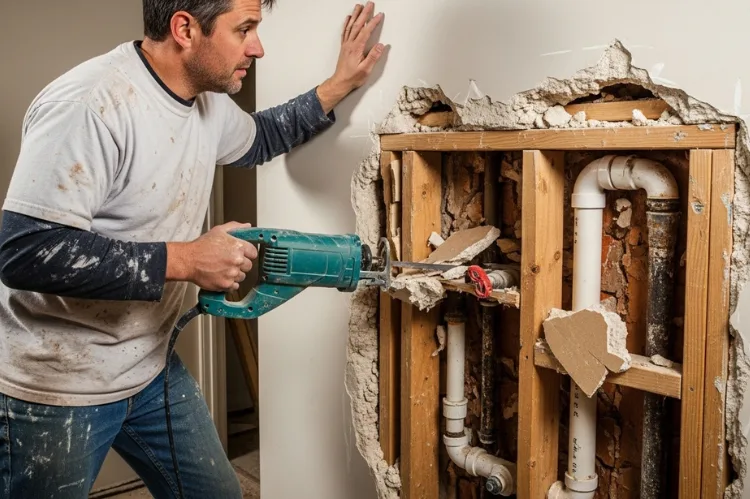Flipping houses can be exciting, but it’s also easy to overspend—especially if you’re new to the process. If you’re thinking about flipping a home in Atlanta, you’re in a good spot. The city has a mix of older homes, strong buyer demand, and solid resale potential.
Still, making a profit comes down to planning. It’s not just about finding a cheap house and hoping for the best. You need to know where to spend and where to save. You also need to avoid common mistakes that eat into your budget.
This guide walks you through the key parts of a smart, budget-friendly flip—from picking the right property to deciding when to call in professionals. Whether you’re doing it for the first time or want to avoid costly surprises this time around, these tips will help you stay on track.
Know When to DIY and When to Hire Pros
 Saving money by doing work yourself sounds like a great idea—and it can be, in the right situations. You might handle small projects like painting, removing old fixtures, or doing simple landscaping. These tasks don’t require a license, and they make a big difference in how a house looks.
Saving money by doing work yourself sounds like a great idea—and it can be, in the right situations. You might handle small projects like painting, removing old fixtures, or doing simple landscaping. These tasks don’t require a license, and they make a big difference in how a house looks.
But some jobs should always be left to professionals. Things like electrical, plumbing, and roofing aren’t just tricky—they also need to meet code. If you try to cut corners, you could end up spending more in the long run to fix mistakes or pass inspection.
One smart move is to bring in a local Atlanta roofer early in the process. A roof in bad shape can scare off buyers or fail an inspection. Getting it checked and repaired before listing the property can save time and stress later. It also helps show buyers that the home has been properly updated, which can lead to stronger offers.
Choose the Right Property

The success of your flip depends a lot on the property you choose. If the price is too high or the work is too much, it’ll be hard to make a decent return. Look for homes that need cosmetic updates rather than full rebuilds. Outdated kitchens, old floors, and worn-out paint are easier to fix than major plumbing or structural issues.
You also want to focus on the right area. A home in a popular or growing neighborhood will sell faster. Check what similar homes in the area are selling for. This helps you set a smart price range for both the purchase and the improvements.
Try to avoid properties with serious red flags. Things like foundation cracks, water damage, or termite problems can lead to big repair bills. If you’re not sure what to look for, bring someone experienced with you when viewing the home.
Focus on Affordable Visual Updates

One of the best ways to improve a home without spending too much is to tackle easy visual changes. A fresh coat of paint, clean flooring, and updated lighting go a long way in helping a home feel new.
Stick to neutral colors and simple finishes. You’re not designing the home for yourself—you’re getting it ready to sell. Choose things that most buyers will like. Swapping out old cabinet handles or updating faucets can also make a home look more modern without a huge budget.
Avoid custom features or expensive upgrades unless they’re common in the neighborhood. You want the house to look nice, not overdone. Spend smart and let the condition of the market guide you.
Shop Smart for Materials

You don’t have to pay full price for everything. There are plenty of ways to save money on materials if you’re willing to look around. Check out clearance sections at hardware stores or search for overstock items online.
Many contractors sell leftover materials at a discount. Facebook Marketplace or other local listing sites can also be great for finding things like tile, doors, or appliances.
Always compare prices. It might take more time, but buying smarter can cut hundreds or even thousands from your total project cost. Just make sure the materials are still in good shape. Saving money is great, but not if it causes problems during the flip.
Expect the Unexpected

No matter how well you plan, surprises will come up. You might open a wall and find hidden damage. You might have to fix something to pass inspection. That’s why it’s important to build a buffer into your budget.
A good rule is to set aside 15 to 20 percent of your total budget for unexpected costs. That way, you’re not stuck scrambling when something goes wrong.
Try to get a full home inspection before you buy. It costs a little upfront, but it can warn you about major problems. Even if the seller doesn’t fix anything, you’ll know what you’re getting into.
Don’t Over-Improve
When flipping a home, it’s easy to get carried away. You might think high-end finishes or luxury upgrades will help the house sell faster, but that’s not always true. If the neighborhood doesn’t support it, buyers won’t pay more just because you added fancy extras.
Focus on clean, simple, and modern updates. Make sure the kitchen and bathrooms feel fresh. Make sure the flooring is clean and the lighting looks current. That’s what most buyers want.
Spend your money where it matters. Don’t add features that look nice but won’t increase the final sale price. Remember—every dollar you spend has to come back to you when the home sells.
Flipping a home takes work, but it doesn’t have to drain your budget. If you plan carefully, shop smart, and bring in help where it’s needed, you can finish your flip with money left in your pocket.
The key is knowing where to spend and where to save. Stick to cosmetic updates that add value, and don’t waste money on things buyers don’t care about. Make sure big issues like the roof or plumbing are handled by professionals. And always leave room in your budget for surprise problems.
If you stay focused and avoid unnecessary upgrades, your next flip can be both successful and affordable.
Read Next: House Exterior Cleaning Tips for Lasting Curb Appeal

